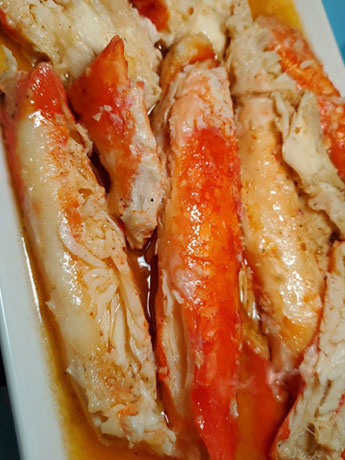Greek Meatballs

Greek Meatballs: A Taste of Home and Heritage
If there’s one recipe that never fails to whisk me straight to my grandmother’s sunny kitchen in Athens, it’s classic Greek meatballs—better known as keftedes. The aroma of sizzling meat, mingled with onions, garlic, and oregano, used to drift through her house, bringing everyone together at the table before the platter even hit the center. Even now, making these juicy Greek meatballs is my secret weapon whenever I want to bring comfort, warmth, and a little Mediterranean magic to my own family dinners.
Why You’ll Adore These Greek Meatballs
I can’t wait for you to try this recipe. Here’s why these Greek meatballs might become your new dinnertime obsession:
- Unmistakable Flavor: The blend of fresh parsley, sweet grated onion, and earthy oregano gives every bite that authentic Greek comfort food feel—like your taste buds just spent a day wandering along the Aegean.
- Crowd Pleasure Guaranteed: Whether you serve these Greek meatballs as an appetizer, in a pita, or over rice, they’ll disappear fast. (Don’t say I didn’t warn you!)
- Quick and Easy: You don’t need fancy ingredients or hours in the kitchen to get that bold, homemade flavor.
- Totally Versatile: I love making a big batch and freezing extras—they’re perfect for busy nights or unexpected guests.
Ingredients You’ll Need for Greek Meatballs
Let’s break down what you’ll need for these mouthwatering keftedes—and why each ingredient matters:
- 1 lb ground beef or lamb: Traditional keftedes are often made with lamb, but beef works beautifully too (feel free to even mix both for more complex flavor).
- 1/2 cup breadcrumbs: These bind everything together and keep your meatballs tender. I like to use fresh breadcrumbs for a softer texture.
- 1/4 cup chopped fresh parsley: Don’t skimp here! The fresh herbs really lift the flavor and add lovely green flecks.
- 1/4 cup grated onion: Grating instead of chopping guarantees juicy meatballs and no big onion bits.
- 2 cloves garlic, minced: A Greek meatball without garlic? Unthinkable! (If you love garlic, sneak in an extra clove.)
- 1 egg: Acts like glue, holding everything together during frying.
- 1 tsp dried oregano: For that signature Greek aroma—try to use Greek oregano if you can find it.
- Salt and pepper, to taste: Start with a light hand, then adjust after you’ve fried your first tester.
- Oil, for frying: Use a neutral oil with a high smoke point, like canola or sunflower, so the flavor doesn’t overpower your keftedes.
Step-by-Step Guide: Making the Perfect Greek Meatballs
Here’s how I make these Greek meatballs come out juicy and flavorful every single time:
- Mix the Base: In a big bowl, combine ground beef (or lamb), breadcrumbs, parsley, grated onion, minced garlic, egg, oregano, salt, and pepper. I use my hands—the warmth helps everything bind without over-mixing.
- Shape the Meatballs: Roll the mixture into small balls or little flattened patties (about golf ball sized). I wet my hands with water to stop the mixture from sticking.
- Heat Up: Pour enough oil into a large skillet to generously coat the bottom, and heat over medium. You’ll know it’s ready when a tiny drop of the mixture sizzles.
- Fry in Batches: Add the meatballs carefully, without crowding the pan. Fry them in batches, turning gently to brown all sides. This usually takes 5-7 minutes; you want them golden and cooked through.
- Drain and Serve: Transfer to a plate lined with paper towels to soak up extra oil. Serve hot with a tangy dollop of tzatziki or your favorite dip.
My Secret Tips and Tricks for Greek Meatballs Success
After years of making and tweaking this Greek meatball recipe, here’s what I’ve learned:
- Grate, Don’t Chop, Your Onion: Grated onion melts right into the meat, keeping the keftedes moist (and picky kids won’t notice!).
- Don’t Overmix: Mix until just combined, or your meatballs could turn dense instead of tender.
- Test for Seasoning: Before rolling all the meatballs, fry or microwave a tiny patty and taste-test. This way, you can tweak salt and pepper before the batch goes in.
- Use Day-Old Bread: If you want super tender meatballs, soak stale bread in milk, squeeze out excess, and use instead of breadcrumbs (a classic Greek cooking trick).
Creative Variations and Ingredient Swaps
Want to switch things up with this easy keftedes recipe? Try these variations and swaps:
- Ground Turkey or Chicken: For a lighter take, swap in poultry and boost the herbs for flavor.
- Add Fresh Mint: Many Greek families sneak mint into their meatballs for a surprising pop of freshness.
- Make Them Gluten-Free: Use gluten-free breadcrumbs or even almond flour—just watch the texture so they still bind.
- Baked, Not Fried: If you’d rather avoid frying, bake the meatballs on a lightly greased tray at 400°F for 15-20 minutes, flipping halfway through.
How to Serve and Store Your Greek Meatballs
Greek meatballs are super versatile and crowd-friendly. Here’s how I love serving (and storing) them:
- With Tzatziki: Nothing beats a platter of warm keftedes with chilled tzatziki sauce and lemon wedges.
- In Pitas: Tuck them into pita bread with tomato, cucumber, onion, and extra herbs.
- On Salads or Rice Bowls: Add protein and flavor to your favorite Mediterranean salads or grain bowls.
- Storage: Store leftover Greek meatballs in an airtight container in the fridge for up to 3 days. Reheat in a skillet or the microwave. They also freeze beautifully—freeze in single layers, then transfer to a freezer bag for up to 2 months.
FAQs: Your Top Questions About Greek Meatballs Answered
1. Can I meal prep Greek meatballs in advance?
Absolutely! Shape your meatballs ahead, and either freeze them raw (layered between parchment) or keep them in the fridge until you’re ready to fry. Perfect for fast weeknight dinners.
2. What’s the best meat for keftedes?
Traditional Greek keftedes often use lamb, but beef (or a mix) is just as delicious and readily available.
3. My meatballs fall apart when frying. What can I do?
Make sure you’re not skipping the egg and breadcrumbs, and chill your shaped meatballs in the fridge for 15-20 minutes before frying—this helps them firm up.
4. Are Greek meatballs spicy?
Classic keftedes aren’t spicy—just aromatic from the garlic, onion, and oregano. If you love a little heat, try adding a dash of chili flakes.
5. What are common sides for Greek meatballs?
Go for simple Greek salads, roasted potatoes, or even a light tomato and cucumber salad. (And don’t forget the tzatziki!)
I hope this Greek meatballs recipe brings a little sunshine and family comfort to your table, just like it does for mine. If you try it, let me know what you think—sharing food really is the best way to keep traditions alive. Kali orexi (bon appétit), friends!
Greek Meatballs (Keftedes)
Ingredients
Main Ingredients
- 1 lb ground beef or lamb Beef works beautifully, or mix both for more flavor.
- 1/2 cup breadcrumbs Use fresh breadcrumbs for a softer texture.
- 1/4 cup chopped fresh parsley Enhances flavor and adds color.
- 1/4 cup grated onion Grating keeps meatballs juicy.
- 2 cloves garlic, minced Adjust quantity if you love garlic.
- 1 medium egg Acts as a binder.
- 1 tsp dried oregano Use Greek oregano for authentic flavor.
- to taste salt and pepper Adjust after testing.
- as needed oil for frying Use a neutral oil like canola.
Instructions
Preparation
- In a large bowl, combine ground meat, breadcrumbs, parsley, grated onion, minced garlic, egg, oregano, salt, and pepper using your hands.
- Roll the mixture into small balls or flattened patties, about golf ball size, wetting your hands with water to prevent sticking.
- In a large skillet, pour oil to coat the bottom and heat over medium until hot.
- Fry the meatballs in batches, carefully turning them to brown all sides for 5-7 minutes until golden and cooked through.
- Transfer to a plate lined with paper towels to drain excess oil, and serve hot.






